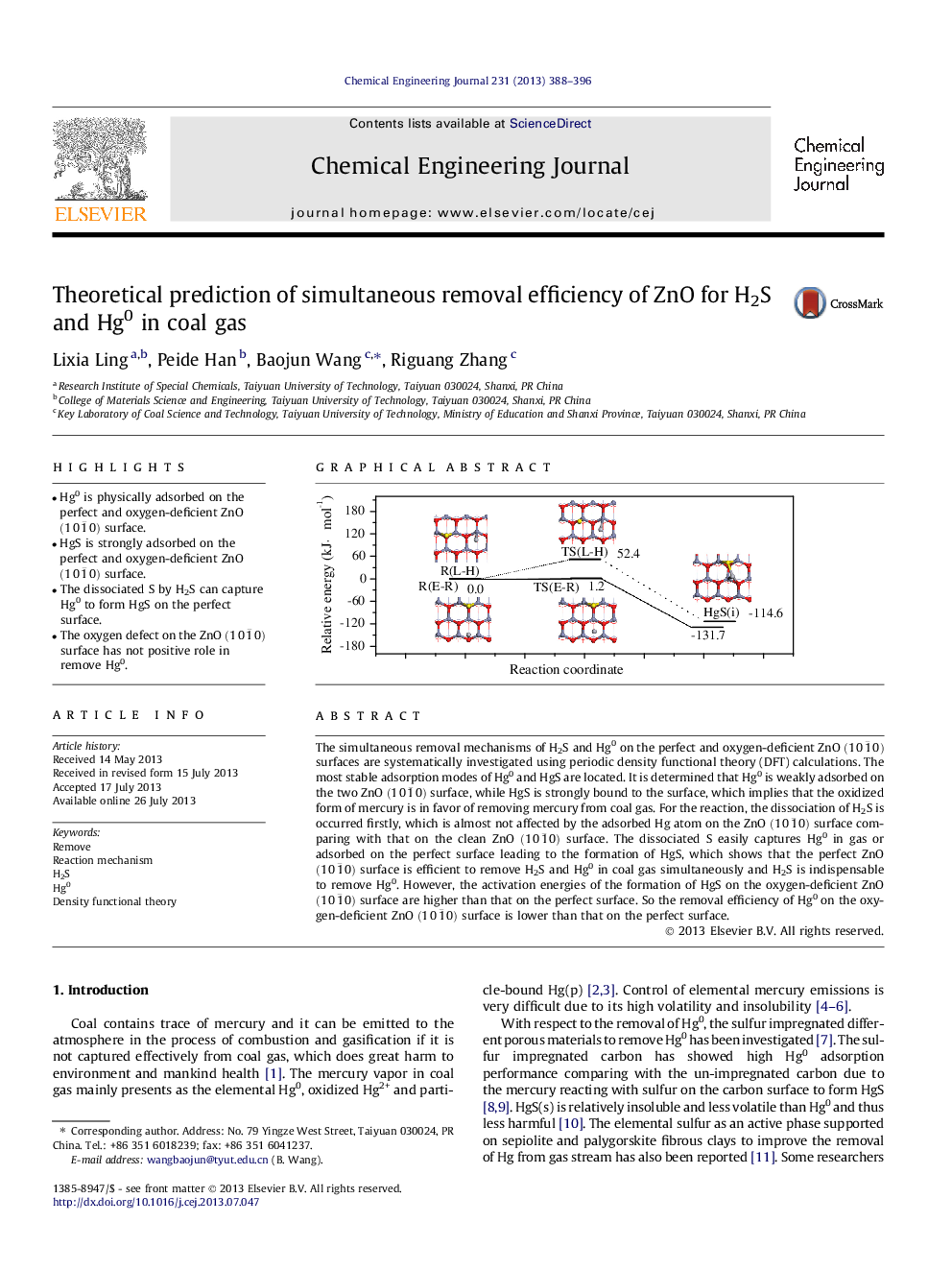| کد مقاله | کد نشریه | سال انتشار | مقاله انگلیسی | نسخه تمام متن |
|---|---|---|---|---|
| 148281 | 456408 | 2013 | 9 صفحه PDF | دانلود رایگان |

• Hg0 is physically adsorbed on the perfect and oxygen-deficient ZnO (101¯0) surface.
• HgS is strongly adsorbed on the perfect and oxygen-deficient ZnO (101¯0) surface.
• The dissociated S by H2S can capture Hg0 to form HgS on the perfect surface.
• The oxygen defect on the ZnO (101¯0) surface has not positive role in remove Hg0.
The simultaneous removal mechanisms of H2S and Hg0 on the perfect and oxygen-deficient ZnO (101¯0) surfaces are systematically investigated using periodic density functional theory (DFT) calculations. The most stable adsorption modes of Hg0 and HgS are located. It is determined that Hg0 is weakly adsorbed on the two ZnO (101¯0) surface, while HgS is strongly bound to the surface, which implies that the oxidized form of mercury is in favor of removing mercury from coal gas. For the reaction, the dissociation of H2S is occurred firstly, which is almost not affected by the adsorbed Hg atom on the ZnO (101¯0) surface comparing with that on the clean ZnO (101¯0) surface. The dissociated S easily captures Hg0 in gas or adsorbed on the perfect surface leading to the formation of HgS, which shows that the perfect ZnO (101¯0) surface is efficient to remove H2S and Hg0 in coal gas simultaneously and H2S is indispensable to remove Hg0. However, the activation energies of the formation of HgS on the oxygen-deficient ZnO (101¯0) surface are higher than that on the perfect surface. So the removal efficiency of Hg0 on the oxygen-deficient ZnO (101¯0) surface is lower than that on the perfect surface.
Figure optionsDownload as PowerPoint slide
Journal: Chemical Engineering Journal - Volume 231, September 2013, Pages 388–396